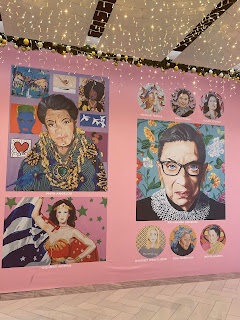Understanding the True Meaning of Creation in Fashion
Understanding the True Meaning of Creation in Fashion
In the world of fashion, titles carry weight. The word designer is not just a label—it is a role built on artistry, vision, and craftsmanship. Yet, in recent years, there has been a growing trend of individuals purchasing already-made garments, placing their own labels on them, and presenting collections as if they themselves were the creative force behind them. While entrepreneurship and curation are valid and important, this practice blurs the line between what it means to own a brand and what it means to be a designer.
The Core of True Design
Designing is not about simply choosing clothes; it is about giving birth to something that did not exist before. The process begins with inspiration, often drawn from culture, art, nature, history, or personal narrative. From there, sketches are drafted, fabric swatches are studied, patterns are constructed, and prototypes are tested and refined. Every cut, stitch, and silhouette represents hundreds of decisions—decisions only a designer can make.
True design is also about problem-solving. How does a garment move with the body? How does it balance beauty and function? How does it push the boundaries of creativity while staying wearable? Designers carry the responsibility of answering these questions, and that is what sets them apart from retailers or stylists.
The Shortcut: Buying and Rebranding
There is, unfortunately, an easier path—one that does not involve the labor of ideation, trial, or refinement. It involves sourcing ready-made clothing from factories or wholesalers, attaching a personal label, and selling it as one’s own. In some cases, individuals go further, presenting these garments on runways or in lookbooks under the guise of being the original creator.
This shortcut may build a business, but it does not build credibility as a designer. It is equivalent to buying a painting and signing your own name at the bottom. While the act of reselling or curating clothing is not inherently wrong, claiming authorship of work that was never created by you erases the labor and artistry of the true creators behind those garments.
Presenting vs. Creating: Two Different Worlds
This is where many people outside the industry get confused: presenting a fashion show is not the same thing as creating a collection.
Anyone with resources can organize a show, gather models, secure a venue, and put garments on a runway. But unless those garments were conceived, sketched, and developed from scratch, the show is merely a presentation of styling—not design.
Creating a collection, by contrast, is one of the most challenging, time-consuming, and expensive undertakings in the industry. It requires months—sometimes years—of research, development, and production. Designers work hand-in-hand with pattern makers, tailors, and artisans to bring their concepts to life. They think about not just one garment, but an entire narrative that ties a collection together, making sure each piece contributes to the larger story.
When the audience watches a runway show by an authentic designer, they are not just seeing clothes—they are witnessing the unveiling of an artistic vision brought into physical form.
Why This Distinction Matters for Fashion’s Integrity
Fashion, like art, depends on authenticity. When individuals claim the title of “designer” without actually engaging in design, it dilutes the value of the craft. It disrespects the long hours, sleepless nights, and technical mastery that true designers pour into their work.
Moreover, it misleads the public. Consumers who are not familiar with the behind-the-scenes process may assume that every brand presenting a show or selling unique pieces is a design house. This false impression weakens the understanding of what design actually is and devalues those who devote their lives to it.
Respecting the Roles
It is important to recognize that not everyone in fashion has to be a designer. The industry thrives on diversity of roles:
- Entrepreneurs build platforms and create opportunities for design to reach the market.
- Curators and stylists bring together pieces in innovative ways that tell new stories.
- Retailers provide access to fashion for wider audiences.
All of these contributions are vital. But they are not design. Respecting these differences is key to preserving the integrity of the fashion ecosystem.
The Future of Fashion Depends on Clarity
Fashion evolves with each generation, and with that evolution comes the responsibility to educate. The industry—and those who participate in it—must emphasize the distinction between designing and reselling. To celebrate someone who builds a show from purchased garments as a designer is to misplace recognition. To celebrate them as a business owner, stylist, or curator, however, is entirely fair.
In the end, the question is not whether one should buy and present clothing that already exists—many successful businesses thrive on that model. The question is about honesty and respect: respecting the title of “designer” as one that belongs only to those who dare to create from nothing, and respecting other roles for the unique value they bring.
Fashion is strongest when authenticity leads the way. The world doesn’t need more people pretending to be
The truth is, fashion needs all types of players—designers, stylists, curators, retailers, entrepreneurs. Each contributes something unique. But claiming the title of “designer” without engaging in the creative process diminishes the artistry of those who dedicate their lives to it.
In the end, fashion thrives when we honor authenticity. The industry must learn to respect every role for what it truly is, and protect the word designer for those who actually design.



